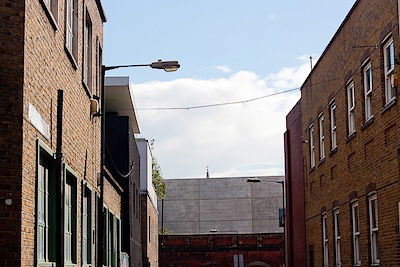Damon asks this question, which is about a catenary wire system between two buildings, and whether it should be seen as an exposed conductive part. It has been answered by the NICEIC (Theme – Regulations and Legislation):
This Q & A is one of thousands posted in our Technical Expertise area, and answered on a daily basis by our Voltimum Experts.
Question: When carrying out an Electrical Installation Condition Report (EICR), I came across a 6mm twin & earth cable on a catenary wire running between two buildings.
The circuit protective conductor (CPC) is not connected at either end and a separate RCD and earth electrode is fitted at the receiving consumer unit.
The 6mm twin & earth cable is taped to the catenary wire, which is 6mm BS 6004.
Am I correct in saying that the CPC is an exposed conductive part, and also that the catenary wire is an exposed conductive part?
Answer: Firstly, we would not recommend that twin & earth cables to BS 6004 be used for such an installation method, because of continual flexing in windy conditions and degradation through solar radiation.
Observing such a condition should be noted on the EICR as a Code 3 (or possible Code 2, depending upon the circumstances and potential for danger).
Our view is that a catenary wire is a cable support system and, as such, does not fall under the definition of an exposed-conductive-part and hence need not be earthed, and hence need not recorded in the EICR.
To see many more Q & A in Voltimum UK's Experts Area, please click on the link. Experts from leading organisations provide online answers to your technical questions on a broad range of subjects. Our searchable database of existing Q & As now contains over 3,500 entries; you can browse through them here.


